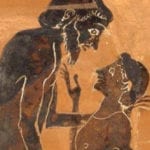 Mysteries
Mysteries  Mysteries
Mysteries  History
History 10 Surprising Stories About the Texas Rangers
 Humans
Humans 10 Philosophers Who Were Driven Mad by Their Own Theories
 Miscellaneous
Miscellaneous 10 Video-Game-Worthy Weapons and Armors from History
 Weird Stuff
Weird Stuff 10 Psychics Who Accurately Predicted Wartime Events
 The Arts
The Arts 10 Pieces of Art Inspired by a Broken Heart
 Health
Health 10 Science Fiction-Sounding New Medical Treatments
 History
History 10 Surprising Facts About the Father of Submarine Warfare
 Space
Space Ten Astonishing New Insights into Alien Worlds
 Weird Stuff
Weird Stuff 10 Bizarre Summer Solstice Rituals Still Practiced Today
 Mysteries
Mysteries Top 10 Haunting Facts About the Ghost Ship MV Alta
 History
History 10 Surprising Stories About the Texas Rangers
 Humans
Humans 10 Philosophers Who Were Driven Mad by Their Own Theories
Who's Behind Listverse?

Jamie Frater
Head Editor
Jamie founded Listverse due to an insatiable desire to share fascinating, obscure, and bizarre facts. He has been a guest speaker on numerous national radio and television stations and is a five time published author.
More About Us Miscellaneous
Miscellaneous 10 Video-Game-Worthy Weapons and Armors from History
 Weird Stuff
Weird Stuff 10 Psychics Who Accurately Predicted Wartime Events
 The Arts
The Arts 10 Pieces of Art Inspired by a Broken Heart
 Health
Health 10 Science Fiction-Sounding New Medical Treatments
 History
History 10 Surprising Facts About the Father of Submarine Warfare
 Space
Space Ten Astonishing New Insights into Alien Worlds
 Weird Stuff
Weird Stuff 10 Bizarre Summer Solstice Rituals Still Practiced Today
10 Peculiar Revenge Rituals From Around The World
Revenge is a huge part of the human experience. Throughout history and all the way to modern day, there are practices in place that operate around a principle that injustice is met with justice. Here, we detail some of the most peculiar revenge rituals to have ever existed—whether they’re to aid revenge or to somehow escape it.
10 Destroying Or Eternally Caging Churels
India
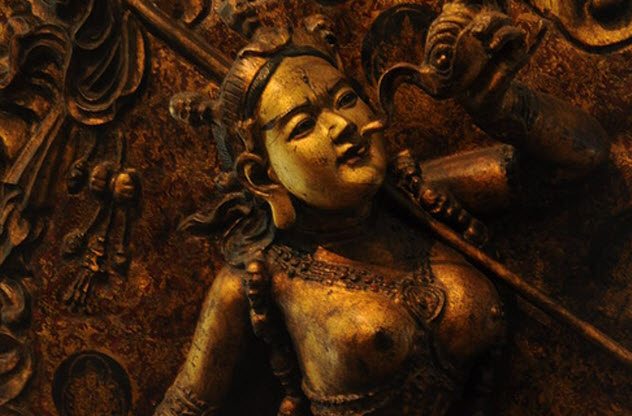
The churel is a South Asian demon, most readily found in Indian folklore. Its roots are arguably misogynistic as it’s the spirit of a woman who has died while pregnant or in a 40-day period of isolation following the birth. Instead of sympathetic remembrance, the deceased becomes feared and vilified.
The churel is believed to be obsessed with vengeance against those who have wronged it. Obviously, penitence for wrongdoing is relatively nonexistent. The majority of male energy is instead spent deliberating over the best ritual to prevent ghostly payback.
It’s Hindu tradition to cremate bodies. However, for high-risk churel candidates, burial was considered a safer option.[1] One popular method was to bury the woman in a grave filled with thorns and to weigh down the lid of the coffin with heavy stones. Thus, the vengeful churel could not escape and spent eternity attempting to remain as still as possible to avoid thorn pricks.
The churel burial technique in Gurdaspur involves hammering nails through a woman’s fingers. Her big toes and thumbs are also bound together with iron rings. Mustard seed is then scattered across her grave as its scent is believed to calm the churel.
9 The Nithing Pole
Iceland
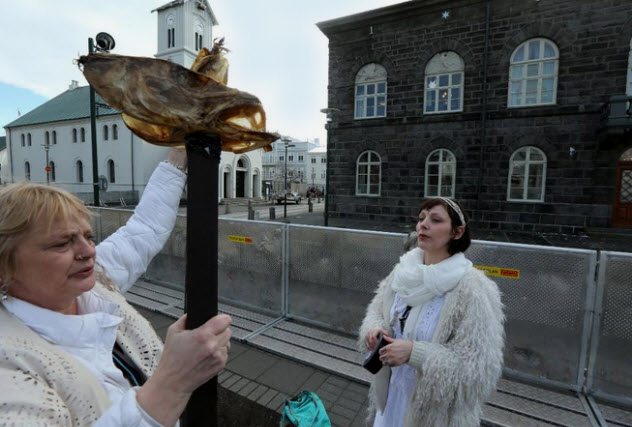
The aboriginal religion of the Germanic people is filled with fascinating legend and ritual. Their most enduring and odd method of exacting revenge involves the nithing pole. It’s a big pole with a horse’s head on the end of it—simple, elegant, Germanic design.
In fairness, the pole was jazzed up a bit with the engraving of a curse written in runes and the beheaded horse’s skin would occasionally coat it. The object would then be fixed in the ground and pointed in the direction of the disliked party, which was often a Roman.[2]
The nithing pole is still used in Iceland every now and then. In 2006, an Icelandic farmer’s puppy was run over. Seeking revenge, he erected a nithing pole with a note attached that stated he would not rest until the driver faced severe justice.
The most common targets of the modern nithing pole are politicians. In 2016, Icelandic Prime Minister Sigmundur Gunnlaugsson was targeted. Instead of the traditional horse heads, cod heads were used.
8 Karhunpeijaiset
Finland

Before Christianity was absorbed into Finnish culture, Finland’s own brand of paganism was prevalent. A common ritual was called karhunpeijaiset, which was held after a successful bear hunt.
Within the animist-based pagan belief system, the bear was revered as the living embodiment of Finnish ancestors. The original word for bear was otso and could never be spoken out of respect.[3] Instead, bears were referred to in a roundabout way with phrases such as “browed one” and “the golden apple of the forest.” From that, the modern Finnish word for bear, karhu, was developed, which means “rough fur.”
It’s worth nothing that one of the most popular beer brands in Finland is called Karhu, meaning that images of the sacred bear are now plastered across every city in rather unpleasant settings. If undead bears make the trek from beyond the Wall over to Helsinki, Finns will only have themselves to blame.
Olden-day Finns feared dead bear vengeance to such an extent that karhunpeijaiset largely involved convincing the bear’s spirit that it hadn’t been murdered. Therefore, the bear had no reason to be angry at the hunters and so could reincarnate itself back in the forest.
Thus, the ceremony acted as a way to excuse their past behavior and eliminate the bear’s desire for revenge—through total denial. Ancient paranormal gaslighting—Finns were masters of it.
7 Hanging The Matchmaker
Lithuania
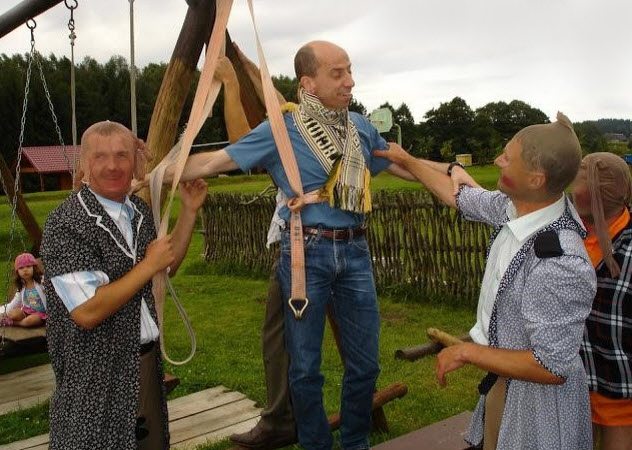
Alcohol is front and center in most cultures when it comes to weddings. Historically, Lithuanian weddings are a little different than the sloppy wine and cocktail wiener fests that you’re used to. Alcohol plays an even greater part. It’s sewn so deeply into the ceremony that every polite person traditionally gets totally hammered.
Throughout the day, guests yell, “Bitter!” It indicates that it’s time for all couples to gulp a vodka shot. Then they make out. The sweetness of the kiss takes away the bitterness of the shot.
Bitterness is also the theme of the oddest of all the wedding rituals that take place. In its narrative, the matchmaker (traditionally male) for the newlyweds is exposed as a dirty liar.
He has concocted an elaborate web of deceit concerning the bride’s wealth. She’s poor, and now everyone knows it. Revenge must be sought, and the most just form of revenge is deemed to be death by hanging. A little extreme, sure, but it makes total sense when you’re that drunk on vodka.
Before the actual matchmaker is hanged, the bride comes to his rescue and an effigy in his likeness is hanged instead.[4]
6 Chickasaw Blood Revenge
North America
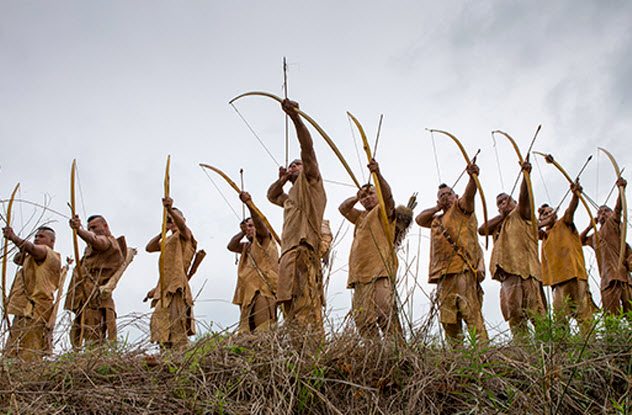
The Chickasaw are the indigenous people of the Southeastern Woodlands. Their territory included what is now Tennessee, Alabama, and Mississippi. Back in the day, blood revenge was a big part of their culture.
If someone had been killed, the killer must also die. This ensured that the spirit of the murdered could finally rest peacefully. It also meant that the spirit would no longer haunt those deemed responsible for seeking revenge. It was an act of cowardice not to go after the murderer. The Chickasaw believed that the spirit of the deceased recognized this and greatly resented it.
More death was simply inescapable. If the murdered person’s kin couldn’t exact revenge directly on the killer for some reason, then the Chickasaw would substitute a member of the killer’s family for the ritual. It was considered extremely dishonorable not to offer yourself up for the execution and would bring you spiritual misfortune. As a result, the ritual revenge executions largely went off without a hitch.[5]
5 The Cunning Folk’s Voodoo Dolls
England
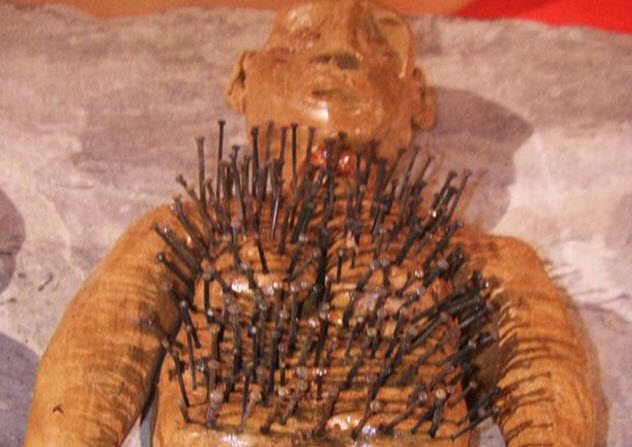
The voodoo doll is possibly the most recognizable supernatural object used in the name of revenge. Naturally, we think of these dolls as originating with the practice of voodoo. That’s not really the case. Waxed effigies, manipulated and destroyed to affect the cursed victim, were used in many places in the ancient world, including Persia and Egypt.
In England, string-based effigies called poppets were widespread. They have been used in witchcraft for centuries—often placed in chimneys so that the victim would feel the heat of the flames.
Early films have helped create the misconception of what the voodoo doll is and where it originated. Perhaps the earliest usage of a miniature human effigy that resembles the movie voodoo doll is that used by the English cunning folk. They would stick pins in the object to fight back against suspected black witches.
The cunning folk were also known to have used “witch bottles,” which helped lift curses. The concoctions inside the bottles were often made of body fluids, nail clippings, and hair of the afflicted.[6] Therefore, it’s likely that this cunning folk practice also contributed to the modern image of what’s needed in the production of an effective voodoo doll.
4 Angry Grave Thumping
Tamil Nadu, India

In Tamil Nadu, India, honor killing is a real problem. From 2013 to early 2016, 81 honor killings were recorded. That’s not to say that there weren’t significantly more. Most are brushed off by courts of law as suicide and forgotten about.
Revenge is deeply entrenched in traditional Tamil culture. If someone does wrong by you, it’s only fair for you to take action to restore your dignity.
Some Tamil revenge rituals remain quite mysterious to the rest of India. When V.K. Sasikala angrily hit recently deceased Chief Minister Jayalalithaa’s memorial slab, many were baffled. They were thought to have been on friendly terms.
It turns out that it’s an ancient Tamil practice, known as Vanjinam Uraithal, which roughly translates as “Avenging.” In that moment, Sasikala was vowing to avenge the wrongdoing that her friend had endured.
Traditionally, the Tamil would go to greater lengths in the revenge ritual. Any remaining bones and ashes of the deceased would be gathered, and the vow would be made directly over them.[7]
3 Khakhua Consumption
Papua New Guinea

Although the Korowai of Papua New Guinea are known to eat their tribesmen, they do not see themselves as cannibals. In fact, any corpse that’s eaten isn’t really thought to be the corpse of a person at all.
They believe that a specific type of witch called a khakhua can eat someone’s insides while that person sleeps and replace the innards with ash. The khakhua then kills its victim by piercing his heart with a magic arrow. These dangerous witches live among the tribe in human form. The Korowai learn who among them is a khakhua when one of its victims, shortly before death, has a vision of who is attacking him.
The Korowai are then quick to take revenge. The tribesman who is believed to be a khakhua is killed and eaten. This is to properly eradicate his essence and thus protect the sanctity of the tribe.
When asked by a traveling journalist if they ever indulge in cannibalism for any other reasons, a Korowai tribesman replied, “Of course not. We don’t eat humans, we only eat khakhua.”[8]
2 Pointing The Bone
Australia
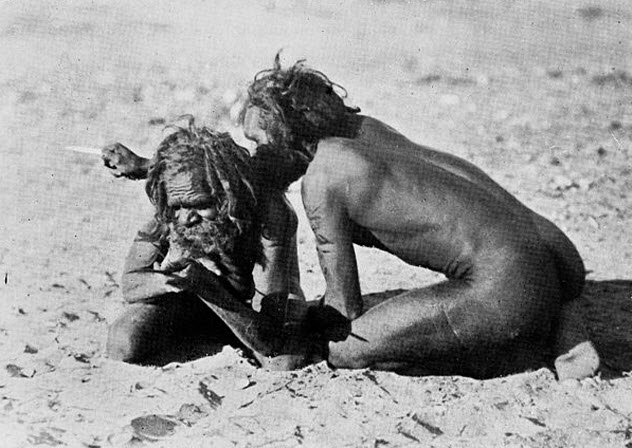
Australian Aborigines traditionally believe that natural deaths rarely occur. Instead, people usually die as a result of evil or curses.
One of the most feared curses within Aboriginal culture is exacted through “pointing the bone.” It’s called that because mystical energy is stored inside a single kangaroo, human, or emu bone through the singing of ancient curses.
A ritual executioner, known as a kurdaitcha, then tracks down the person who’s to be cursed. The element of surprise is important. So the kurdaitcha sneaks up on his target, leaps into the person’s eyeline, and points the mystical bone in his direction.
Ideally, the victim is paralyzed with fear and the kurdaitcha has time to inform him of his fate. It’s believed that the victim will then perish within a month.
It’s not as crazy as it sounds. Fatalities have been reported. The scientific belief is that the knowledge of the curse on oneself creates tremendous worry. In turn, a psychosomatically induced shutdown of the body occurs.[9]
1 Rotting A Body To Anger The Spirit
Ifugao Province, Philippines

The Ifugao people of Luzon, Philippines, are agricultural pioneers. Their rice terraces were hand-carved into mountains over 2,000 years ago. At the time, they were among the most technologically advanced in the world.
Furthermore, the Ifugao Hudhud chant, sung during rice-sowing season, has been recognized by UNESCO on their list of the Intangible Cultural Heritage of Humanity. The list is made up of culturally rich practices that are in desperate need of proactive preservation.
Some traditional Ifugao practices are more awkward for the international community. Head-hunting is something that has progressively died out since the widespread adoption of Christianity. Before then, Ifugao culture was largely fueled by a need for vengeance. It was believed that no peace could come to someone who had been murdered until their murderer had been killed.
The Ifugao and their neighbors were at each other’s throats for centuries, cyclically killing one another as payback for a previous killing. It’s customary for the dead to sit in a chair called the hangdil for several days to ensure that the person doesn’t suddenly spring back to life. The murdered were left out even longer.
The body was pointed in the direction of the village believed to have committed the crime. Elders would intermittently rock the head back and forth, imploring the person’s spirit to go after the murderers. The body’s decomposition was intended to enrage the spirit and spur it into action.
Once vengeance was believed to have been taken, a burial march would take place, accompanied by ceremonial gongs. The purpose was to shoo away evil attracted to the act of murder and to protect the mourners and the soon-to-be-buried deceased.[10]
David is a freelance writer who struggles to let things go. You can find more of his writing at CultureRoast.com. Follow him on Twitter, and like him on Facebook.
Read more about bizarre forms of revenge on 10 Insane, Over-The-Top Ways People Have Taken Revenge and 10 Creative Ways Famous People Got Their Revenge.






